Editor’s note: The following reminiscences represent an excerpt from the larger edition that resides in the Martin F. Schmidt Research Library. To review the full 34 pages, please visit the library or contact us to access a complete copy.
Introduction by Burton Milward Jr.
Lewis William Burton Milward was born in Lexington, Kentucky, on October 15, 1911, the grandson of the Bishop of the Episcopal Diocese of Lexington, which included the Bluegrass Region and all of Eastern Kentucky.
Burton Milward grew up in Lexington. He graduated from Transylvania University and became a prominent journalist and local historian in Lexington. He married Frances Lee Newell, a graduate of Transylvania, at her family’s celebrated Octagon House in Maysville, Kentucky on April 5, 1937. Their marriage produced a daughter, Dudley Lanier Milward Zopp, and two sons, Lewis William Burton Milward, Jr., and Robert Kavanaugh Milward.
Burton Milward, Sr.’s Reminiscences, created in March 2000, showcase interesting aspects of life in Lexington, and family and personal events related to Lexington. Milward recounts the marriage of his grandfather Rev. Lewis William Burton to Georgie Hendree Ball in 1883, an amazing event because he was a Northerner from Cleveland and she was a Southerner from Atlanta, less than twenty years after the end of the Civil War. Theirs was a productive and happy marriage.
Milward’s Reminiscences include diverse subjects, such as a description of the Rebel Yell, a character sketch of Col. Richard Redd, an in-depth account of growing up in the Sixth Street neighborhood where the Episcopal Bishop’s residence was located, a catalogue of his early education and educational opportunities offered in Lexington in the early 1900s, his service as a journalist reporting the 1937 flood, anecdotes of close friend Rev. James Kennedy, the impact of the 1918 Flu Epidemic, several little-known episodes related to the Central Kentucky Concert and Lecture Series in Lexington, and a character sketch of his family’s imaginary companion, a little fellow named Ginky.
A supplement to the Reminiscences reveals the origins of Milward’s lifetime interests in Lexington history and hand-press books.
Burton Milward, Sr. created his Reminiscences in response to requests from his children, especially his daughter. He stated his own reason for creating the memoirs: “It is hoped that someone will use this tape and the background information to write an account which I think would be very interesting to members of our family, and perhaps to others.”
Burton Milward, Sr. died on December 30, 2000.
REMINISCENCES OF BURTON MILWARD, SR.
MARCH 8–11, 2000
This tape was started by Burton Milward on March 8 the year 2000, at the Lexington Center for Health and Rehabilitation. It is hoped that someone will use this tape and the background information to write an account, which I think would be very interesting to members of our family, and perhaps to others.
Colonel Richard M. Redd
I told her, too, about Colonel Dick Redd. Colonel Richard M. Redd who lived in Fayette County, near Lexington, had, when a very young man, served in the Confederate Army. He was not a colonel and probably held no other rank, but after the war he became prominent in Confederate veterans’ organizations and at times was confused or thought to have been a member of Morgan’s Men, which I think he was not. At any rate, Colonel Dick Redd would dress in a Confederate uniform complete with saber and pistol and a plume in his hat and ride a horse in all the parades that were held in Lexington, and would ride up and down Main Street and other streets whenever he felt inclined to. He was a town character of the first proportion. He is said to have ridden, and I think did, his horse up the front steps of the Lafayette Hotel or the Phoenix Hotel, probably the Phoenix, and into the lobby. A large painting of him on his horse hung in the lobby of the Drake Hotel on West Short Street for many years.
The Bishop’s Residence and Sixth Street
I was born at the home of my grandparents, at the Bishop’s Residence, where my mother and father were living at the time. I lived there until I was about twelve years old when we moved down the street to the corner of Broadway and Sixth. During my earliest years, Sixth Street was a dirt street with no paving at all. It did have gutters. In the summer, or at any time whenever it rained, the street was muddy and sometimes almost impassable. In the summer when it was dry, the street was very dusty, and on occasion the city would send an oil cart by. It was a horse-drawn and later a motorized vehicle with an oil tank on it and a sprayer at the rear that would spread a kind of tar-like substance on the dirt and allay the dust for a while. When that occurred, we children were not allowed to go across the street. We had to go down to Broadway and cross there where it was paved.
One time I was across Sixth Street, playing with some of the neighbors, and it was time for me to go home for lunch. Rather than walk all the way down to Broadway, I thought I could sneak across the newly tarred Sixth Street. I did and fell down in the middle of it and got tar all over me, and my mother had a terrible time cleaning me up. At other times, in between the oilings to allay dust, the city sent a water-sprinkling vehicle along the street, and that would help just about as long as it took for the water to evaporate. There was a lot of fun playing in the gutters when it rained, because water would flow down and we would build little dams and float little boats in the gutters. In the fall when leaves fell, people raked their lawns and raked the leaves out into the gutter and burned them. It was quite spectacular. That was a custom that was followed in Lexington on up into probably the 1930s when burning leaves was prohibited.
The houses along Sixth Street at that time were pretty much the same as they are now. Not many have been changed very much.
At the rear of my mother and father’s home at 559 North Broadway, on the corner of West Sixth Street and Broadway, a house was built in part of what was their very deep back yard. The house now is 408 West Sixth Street, at the southeast corner of Sixth Street and Von Alley. It was built by my grandfather, the Bishop, to live in during his retirement. My grandmother died before the house was completed and the Bishop moved into the house and I moved in with him, living there and having our meals with my mother until I married. Earlier, the southwest corner of Sixth Street and Broadway, where we later lived, where the houses 559 North Broadway and 408 West Sixth Street now are, was a vacant lot. We children would play in it. The yard that became 408 was used as a sort of back playground and, when we were old enough, we played baseball there. We dug trenches. I had pigeon houses, and we built a cabin.
At one time, Hendree, my brother, had a pony which was borrowed from Mr. Clarence Kerr. The place was fenced in only with a wire fence and a wire gate. One morning we discovered that the pony was missing. Later in the morning, the police department called and said that the pony had been found many blocks away out on West High Street, near the Jefferson Street viaduct, I believe it was, and Patrolman Waugh, who was the police patrol driver, had loaded the pony into the patrol wagon and brought him back to our lot. The pony was too small for me to ride, but Hendree and Sis did ride the pony.
Then moving west along Sixth Street, on the south side of Sixth Street, there was an alley. I don’t recall that the alley had a name at that time but later it became known as Von Alley. It was named for a family named VonEnglekin, who lived at the other end of the alley in Fayette Park. During World War I, when there was strong anti-German sentiment, Mr. VonEnglekin dropped the Von from his name and Mrs. VonEnglekin did not…
…Then was the Bishop’s Residence where we lived, and next to it was the home of R.D. Norwood, who was a real estate agent. At least part of the time, his daughter and her husband, Mr. and Mrs. Calhoun, lived there. They had two daughters, Nanearle and Dorothy Ann, who was known as Dan. Next west of there was the Wallace house, which was a very large yard. Mr. Wallace was a horse trainer who was connected with horses and always kept a horse or two on the place in a small stable. He had a son, Charlton Wallace, with whom I often played. This is the house that was later owned by John and Hunter Adams. The next house, a very large brick house, was the residence of Mr. and Mrs. Shelby Kinkead. He was in the coal business, and they had several sons. Two of whom, Will Kinkead and Sidney Kinkead, were later in the automobile business as Kinkead-Wilson. And Carneal Kinkead. The property next west of the Kinkead’s was a vacant lot. Old Mrs. Kinkead, who I think was widowed at the time, built a brick house on that lot as a home for Will Kinkead, who was going to get married, but he didn’t. The house was taken by Carneal and Louise Kinkead, who had a son Shelby, with whom I played frequently.
To go to the other end of Sixth Street, back to Broadway, at the northwest corner of Broadway and Sixth Street was a large red brick house which faced Broadway, and as early as I remember, was a Transylvania University fraternity house. It was for quite a few years. Next west of it, on the north side of Sixth Street, was a duplex. I don’t remember the people who lived there when I was very small, but later, at least, Mrs. Lowry lived in one side and Mr. and Mrs. Jack Vonderhaar lived in the other side. Then there was a group of small frame houses, one of which was occupied by Henry Grehan and his sister, Miss Martha Grehan. Henry Grehan later was an instructor at the Massie School in Woodford County, when I went to school there.
Among the other houses on going west was a neat brick cottage, set far back in the yard. This cottage was known as the Geddes House and had a tree-filled lawn. This cottage was also the home of the Bradleys who had a son, Monroe Bradley, who was a few years older than I. Mrs. Bradley was a sister of Mrs. R.D. Norwood, and perhaps the next house was occupied by Mr. and Mrs. Ben Yent and the Edward Applegate family. One of the Yents, probably Mrs. Yent, was related in some way, maybe an aunt, of Lieutenant Donald Putt who was a World War I Air Corps Test Pilot. Airplanes when I was small were a great rarity around Lexington but whenever Donald Putt happened to be flying over Lexington, he would swoop down quite low and buzz up Sixth Street. None of us kids in the neighborhood knew when that might happen, but it was always an event. Lexington had no airport at that time…
…We children would go down to the end of Seventh Street sometimes, and Transylvania College owned a field, a big pasture-like field on North Broadway, beyond Seventh Street, that was used occasionally as a baseball park or for small circuses and the Transylvania athletic field.
To go back to Sixth Street, the house on the northwest corner of Sixth and Headley Avenue was a very large house. I don’t remember who owned it at that time but a part of it was rented out. Part of it was occupied by the Lowridge family. Then next west of it now is the home that was built by Estin Spears and his wife, Dorothy Lowridge, but was not there when I was very small. It was built sometime after 1912. Next west of it, sitting farther back in the yard, was the home of Mrs. Price, an elderly lady who lived with her son, J. Foley Price, and was raising two grandchildren whose mother had died before I remember. The Prices owned the house for quite a few years…
…And beyond the thicket, on Bel Air Avenue, was a big barnlike structure, frame, that was occupied by a sculptor, Pompeo Coppini, who was engaged in sculpting the statue of General John Hunt Morgan, which now stands on the Courthouse lawn. When I really began remembering, the statue had already been completed and Coppini no longer lived in the house, but it was occupied by someone.
Farther down Bel Air Avenue, on the west side of the street, there was a rather small one- story building that was built while I was young, and was built as and used as the Massie School, which was operated by Robert K. Massie, son of Dean Robert K. Massie of Christ Church Cathedral. I went to school there in the fifth grade.
And going back to Sixth Street, on the northwest corner of Sixth and Bel Air, there was a bakery. I think it was called the Holsum Bakery, which was a brick building and emitted a delightful odor when the baking was going on. It could be smelled all up and down Sixth Street.
A story in connection with the bakery, which is still in existence after having changed names and hands many times and having been enlarged, involved our son Robert. The story is that Robert one day disappeared from home, and I set out to try to find him and located him and a couple of his companions in a freight car beside the bakery. This freight car had been used to deliver flour to the bakery and these boys were just covered with flour. Next came the Beltline Railroad tracks and then the orphans’ home.
To go back for a brief time to the corner of Sixth and Broadway — the home that had been a fraternity house became a sort of rooming house and, eventually, I don’t remember just what year, fell into the hands of a woman named Ruth King, who operated an abortion parlor there. My mother and father lived on the opposite corner of Sixth and Broadway. Late one night around midnight, somebody rang their doorbell and when my mother opened the window to call out and see who was there, some young woman said, “Is this where Ruth King lives?” My mother, rather affronted, said, “No, it’s on the other corner!” The house eventually became a sort of flop house and was such a neighborhood nuisance that it was condemned and torn down and replaced with apartments.
In connection with Ruth King, I forgot to say that she became so notorious that eventually she was indicted, or a warrant was issued for her arrest and she shot herself in her house. I remember that my mother stood in the side porch and watched the proceedings as the police and the other authorities came. My sister climbed up in a tree in the side yard and watched.
1937 Flood
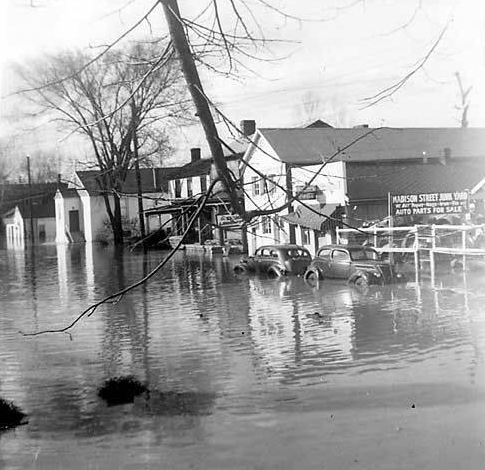
KHS Collections: Community Memories: A Glimpse of African American Life in Frankfort, Ky.,
1995ph2.13AAFRA6
A big event during my newspaper career was the 1937 flood which flooded the Ohio River and Kentucky River and many, many others. John Carter, who was a photographer for the Leader at that time, and I, were sent to Frankfort to take pictures of the flood.
The old state penitentiary was flooded, and prisoners there had to be evacuated. The Army and the National Guard set up a camp on the outskirts of Frankfort, a tent city surrounded by barbed wire and patrolled by the troops. The prisoners were all moved there temporarily. Then several bus loads of prisoners were brought to Lexington in buses. They came in from Frankfort on the Old Frankfort Pike, and prisoners were quartered in the old Post Office Building, which was vacant at the time, at Transylvania University in the gymnasium, and at a few other places around town, all of which were very heavily guarded.
Maysville was severely flooded as Frankfort was. I drove to Maysville, taking a camera, and got as close to the city as I could and trudged the rest of the way to meet a National Guard officer with whom I had talked. He provided me with a boat and a man to row it. I think it had an outboard motor. We went down Second Street through the business district, the water level even with the second story windows of the stores and houses. Frances was in Maysville at the time, fortunately in a house that was well beyond the flood limits.
1918 Flu Epidemic
I mentioned earlier something about the 1918 flu epidemic. During that time, public meetings of more than a handful of people were prohibited. But at the Bishop’s residence, we had service every Sunday morning. The Bishop, of course, presiding and giving a brief sermon and readings from the prayer book and hymns. We had a processional from the back hall into the front hall and into one of the sitting rooms. They had me dressed in a nightgown-like garment and carrying the cross to lead the procession. A number of years later, my brother Hendree, who had heard the story about this, would occasionally conduct a service of his own, with no epidemic, but always with taking up a collection for his own benefit.
Central Kentucky Concert and Lecture Association
This portion of taped reminiscences was made by Frances and Burton Milward in July 1999 to tell some of the sidelights and interesting things that occurred during all the years that the Central Kentucky Concert and Lecture Association series lasted.
The Central Kentucky Concert and Lecture Association dates back to about 1930 when it was organized first as the Community Concert Association. The Concert Association presented its first programs at Memorial Hall on the University Campus in 1932. A few years later, the Lexington Public Forum was organized and presented lectures at the Henry Clay High School auditorium on East Main Street. Both organizations were subscription affairs. They continued their separate ways, both of them at the Henry Clay auditorium until 1950, when they moved to the new Memorial Coliseum, and the associations were reorganized as the Central Kentucky Concert and Lecture Association.
One of the advantages of the move to the Coliseum was that the Association could bring to Lexington the British military groups like the Coldstream Guard and the Scottish Highlanders. They came several times. Each group consisted of a Scottish Highlander band and dancers and bagpipes and the British Guard regiments and band. They presented parades and music.
One of the first times, or maybe the first time that the military groups appeared, some women’s activities person at the University thought it would a great idea to invite the British and Scottish soldiers to a reception after their performance. The reception was held at the student center and all university girls who wanted to attend could, and a lot of them did. These soldiers had been on tour for a long time and they actually were combat-ready soldiers. And they hadn’t seen so many girls in a long time, so the entertainment broke up pretty much into a rout, the men chasing the girls all over the place, and that was the last time the woman ever tried to do that.
Later on, as the expenses increased and inflation set in, the number of men in these units decreased and they were not nearly as spectacular, but they still were very good. One memorable occasion occurred when one of the groups was scheduled for the day that happened to be the day of President Kennedy’s funeral. A few of the Scottish bagpipers played at the funeral procession. The commander of the British group thought it was inappropriate to present a program on the day of Kennedy’s funeral. But John Carter persuaded him that it was all right, and they did perform with a brief ceremony at the beginning.
John Carter was a veteran of World War II, and he told the commander of this British outfit that one of the traditions of the American military was that the troops marched slowly to the funeral but came away with quick step and more lively music.
Another time, when one of the British regiments was to appear, Coach Adolph Rupp objected to their walking on the Coliseum floor, which had just been replaced with new flooring. He thought the men, if they marched at all, ought to wear tennis shoes. But somebody persuaded Rupp to withdraw his objection and the program went on.
Another interesting feature of the Concert and Lecture Association programs was the custom of sometimes holding parties or gatherings after the concert or lecture, especially after lectures, at the homes of some members of the board. One of the most memorable was a party that we had at our home on Nicholasville Pike when Bennett Cerf was the speaker. He came to town and said that his son was a great fan of Adolph Rupp, the university basketball coach, and he would like to meet Rupp. So we called Coach Rupp and invited him and Mrs. Rupp to the party. They came, and we had quite a gathering of friends. Bennett Cerf, who was a famous humorist and editor, sat in the sitting room and, as it happened, Rupp sat in the den, and each was surrounded by a circle of admirers listening to them because both were great storytellers. After a while, I met Rupp out in the hall between the two rooms and Rupp says, “I’11 give him a little more time, and then I’ll move in on him,” and he did. And then they just swapped stories back and forth while everybody at the party laughed and had a great time.
Another event was when Eileen Farrell came on two or three occasions, and she liked to unwind after a concert by coming to somebody’s house to sing more popular songs than she could put on in the Coliseum. George Trovillo was her accompanist but not for the party part of it, only for the program. There was a man, a pianist from WAVE, who would meet with them after the program, and he would play, and Eileen would sing all these popular songs. Sometimes with words that weren’t written for it, but that was what she did.
One time, we had her at our house, and we had a grand piano brought in, and George Trovillo, who was a really top pianist but who preferred to be an accompanist, was in the group and he enjoyed Eileen’s singing as much as anybody did. And one of the guests had a little bit too much to drink and started singing with Eileen. Eileen, without missing a note in whatever she was singing, sang “shut up,” and Rufus did.
George Trovillo liked our children, and when one of them came in, I think it was Burton Jr., Trovillo had a nice little story for him. He said, “Once upon a time, five cats got into a little round boat and sailed out to sea. While they were out there, a storm came up, and the little boat overturned, and do you know what happened?” [The answer, in French, is charming: Un, deux, trois, quatre, cinq!]
An interesting evening occurred in 1953 or 1954, when Eddie Gilmore, who had been a correspondent in Russia, spoke at Memorial Coliseum. I introduced Gilmore and when he and I went on the stage, the corridors above the stage were lined with police and there were policemen at either end of the Coliseum floor. Gradually the people in the audience noticed this and began to kind of titter and wonder what was going on, but nobody said anything. There was no explanation given. It wasn’t until after the program was over that the word got around that Gilmore, who was strongly anti-communist, had been threatened supposedly by communists, and John Carter had arranged for the police to be in the coliseum when he spoke. It wasn’t until after the speech, when Gilmore and I left the stage, that the police surrounded him when he went to the dressing room. A little later, John Carter and Gilmore and I went to the Campbell House for a drink, and one of the local newspaper people, I think it was Andy Eckdahl, got in touch with us by telephone and wanted to know what was going on. We told him and that was really the first that Gilmore knew about the threats. We had not told him beforehand. Only John Carter and I and maybe a very few other people knew anything about it. Ten years later, Gilmore spoke again on the Concert and Lecture Series and again I introduced him and started my introduction with an explanation of the precautions that had been taken earlier. There were no threats this time and no difficulties.
Gilmore, who was from Selma, Alabama, had been in Russia for quite a while and had married a Russian woman, a ballerina. He and she had gotten out of Russia without difficulty once, but they went back in and the next time, shortly before his 1953 appearance here, he had wanted to come out with his wife and one of their two children, but the Russian authorities wouldn’t let her leave the country. Gilmore and his wife had made arrangements to smuggle his wife and the children out in a trunk but, at the last minute, some way arrangements were made so that they could get out without doing that. She lived in Selma and, later on, she joined the lecture circuit with him one year and was right popular, but they did not appear here.
Nelson Eddie came to be on the program in the series of 1936-37 and before he came, he told his agent that he must have complete isolation from his friends. So the agent asked John Carter to let Nelson Eddie come in the back way of the hotel, so that no one would see or know that he was there. He did come in. He went upstairs, and in the afternoon, no one called him, no one came by to get his autograph, and he was so put out by the time dinner came he went down in the hotel dining room and nobody bothered him. They just let him sit there and have his dinner because that’s the way we did things in those days. If it was a talent that came to town, leave him alone until he produces. Well, then it came time for the beginning of Nelson Eddie’s concert. He was at the Henry Clay auditorium which had a stage with a curtain. It also was the time that Mclntire, the president of the Concert Association, always annually gave the rundown of the next year’s programs. He was doing that, and he believed in selling every program, so it took a little while. And about half way through, the curtain behind him kept jiggling a little bit, and it was Nelson Eddie back there saying, “Hurry Up, Hurry Up,” but Mclntire went right on and sold it one by one. Nelson was furious of course, but he performed.
One of the most interesting speakers was Clement Attlee, the former prime minister of Great Britain. When he came to town, he turned out to be a little shriveled-up character. John and I picked him up at the Lafayette Hotel to take him out to the Idle Hour Country Club for dinner before the program. Attlee slumped down in the seat of the car, you could barely see him. When we got to the Idle Hour Club, he sat in a great big sofa. He was scrunched down in the cushions and he looked like he wouldn’t make it even to dinner, let alone the lecture. Well, he had a drink or two at dinner. He got in the car and we took him to the Coliseum. When he got out on the stage, John and Rufus Lisle and the rest of us were afraid he might fall before he got there, but he didn’t. When he was introduced, he sort of came to life. He seemed to grow taller and delivered an excellent lecture and then after the lecture was over, he took questions and answered them and then went off the stage and went back to the dressing room and slumped down again. It was remarkable the transformation he made just for the speech.
Visiting Lexington Farms
When I was young, we frequently went to Louis Haggin’s farm, Mount Brilliant, on the Russell Cave Pike. Mr. and Mrs. Haggin had young children — Betty, the oldest, Jimmy, Louis, and a daughter, I believe Emily. Mr. and Mrs. Haggin would give large parties for them on occasion, especially on the Fourth of July they would arrange fireworks displays and invite children from Lexington, friends of the family, out to the farm. On at least one, maybe more than one, occasion, Mr. Haggin arranged for beagle hunts, where the children loaded onto wagons and followed the hounds across the farm. I don’t recall that the beagles ever roused any prey, but it was a lot of fun.
The Haggins also had the first private swimming pool, a fairly small pool that seemed large at the time — a concrete pool -— built near their house on Mt Brilliant.
Another place we went was the home of Mrs. Sayre, who was the grandmother of Marion Short, a boy a little bit older than I. The house was located on Harrodsburg Pike about opposite where Clay’s Mill Road comes into the Harrodsburg Pike. It was on a farm. She had a sort of summertime kindergarten for children of friends of the family. I remember going there several times and always had a picnic lunch. It was a lot of fun.
End




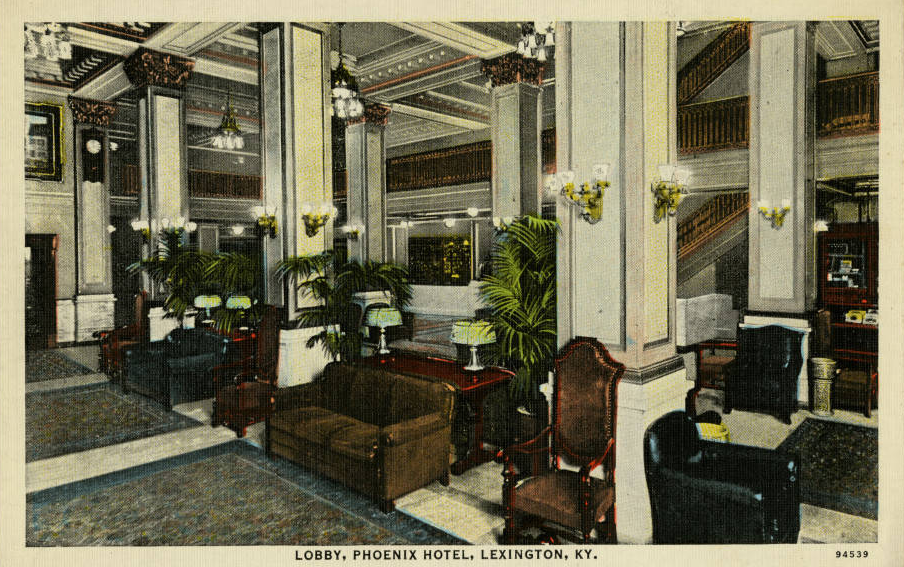
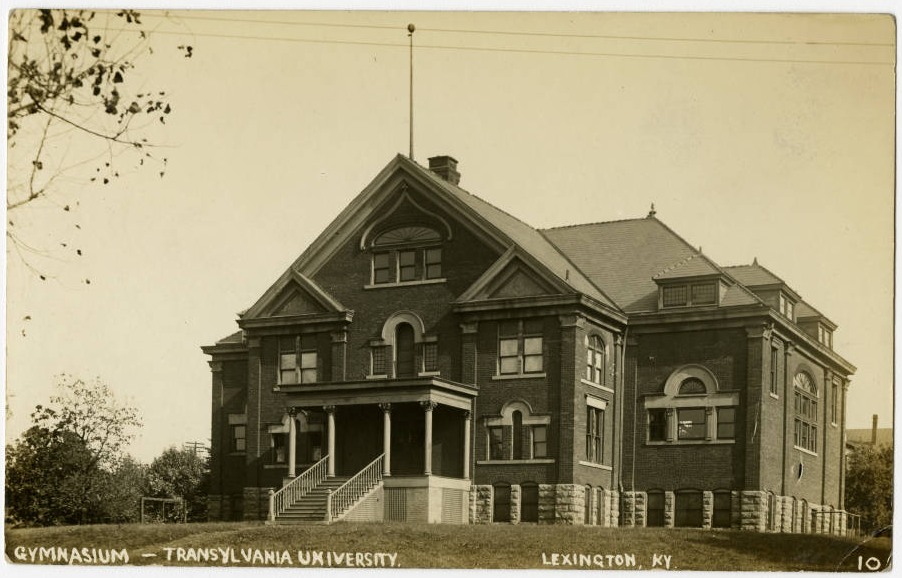

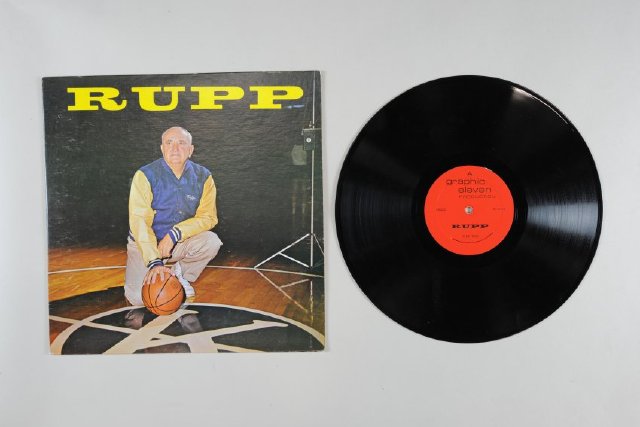
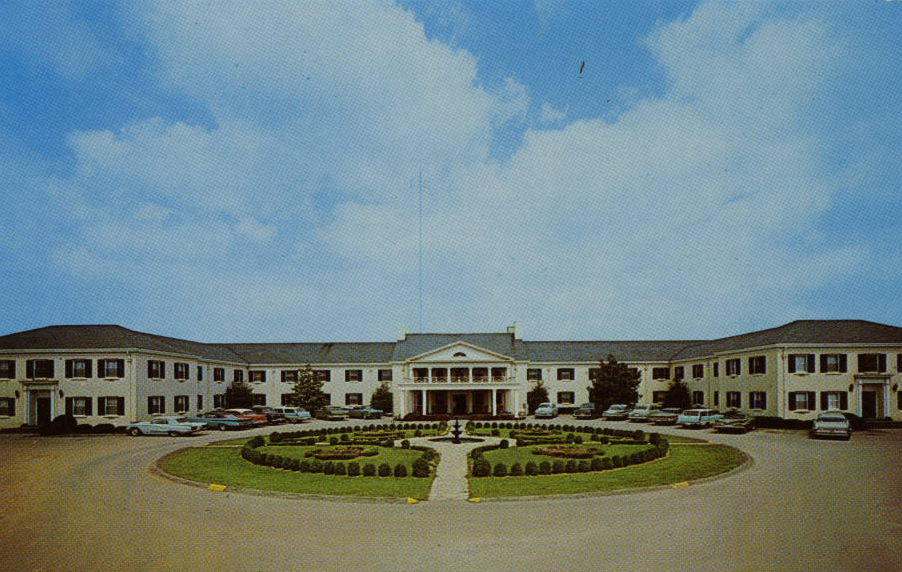
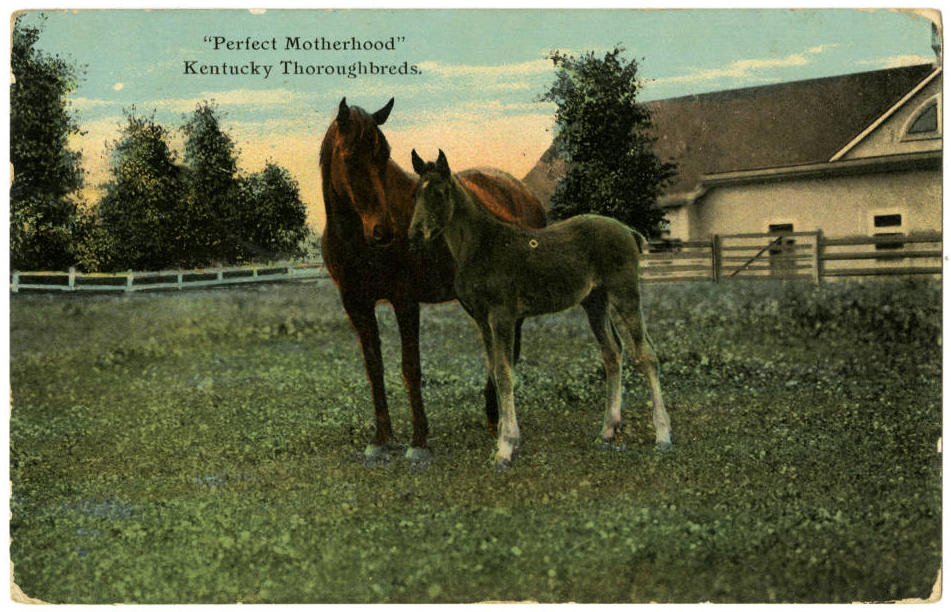

Add a comment